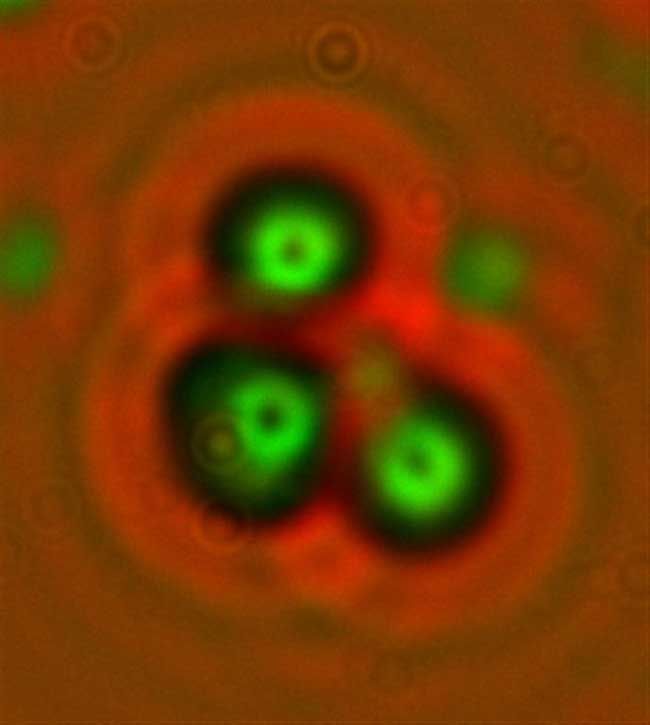New Hope for Controversial 'Cold Fusion' Power Source

If cold fusion can be made to work, it could power the world cheaply on a virtually limitless supply of seawater. But scientists don't even know if it's possible.
Now a new study has produced evidence for the existence of low-energy nuclear reactions (LENR), the new name for the controversial process labeled "cold fusion" two decades ago.
Fusion is the energy source of the sun and other stars. It occurs when atomic nuclei are combined. Today's nuclear plants employ fission, the splitting of nuclei. Scientists have been striving for decades to tap fusion to produce electricity from an abundant fuel called deuterium that can be extracted from seawater. Fusion would not come with the radioactive byproducts of fission.
At a meeting of the American Chemical Society, the scientists described today what they claim is the first clear visual evidence that LENR devices can produce neutrons, subatomic particles that scientists view as tell-tale signs that nuclear reactions are occurring.
In all, 30 papers on the topic will be presented at the meeting this week as part of a 20th anniversary nod to the first description of cold fusion.
Today's announcement was not just a birthday wish, however.
"Our finding is very significant," said chemist Pamela Mosier-Boss of the U.S. Navy's Space and Naval Warfare Systems Center (SPAWAR) in San Diego, Calif. "To our knowledge, this is the first scientific report of the production of highly energetic neutrons from an LENR device."
Sign up for the Live Science daily newsletter now
Get the world’s most fascinating discoveries delivered straight to your inbox.
The consensus 20 years ago was that fusion would require sophisticated new nuclear reactors able to withstand temperatures of tens of millions of degrees.
Then came first report on cold fusion, presented in 1989 by Martin Fleishmann and Stanley Pons. They claimed to achieve nuclear fusion at comparatively "cold" room temperatures — in a simple tabletop laboratory device termed an electrolytic cell. But other scientists could not reproduce their results, and the whole field of research declined.
Some scientists persisted, however, seeking solid evidence that nuclear reactions can occur at low temperatures, as explained in a statement today from the American Chemical Society. One of their problems involved extreme difficulty in using conventional electronic instruments to detect the small number of neutrons produced in the process.
In the new study, Mosier-Boss and colleagues inserted an electrode composed of nickel or gold wire into a solution of palladium chloride mixed with deuterium or "heavy water" in a process called co-deposition. A single atom of deuterium contains one neutron and one proton in its nucleus.
Researchers passed electric current through the solution, causing a reaction within seconds, according to the statement. The scientists then used a special plastic, CR-39, to capture and track any high-energy particles that may have been emitted during reactions, including any neutrons emitted during the fusion of deuterium atoms.
At the end of the experiment, they examined the plastic with a microscope and discovered patterns of "triple tracks," tiny-clusters of three adjacent pits that appear to split apart from a single point. The researchers say that the track marks were made by subatomic particles released when neutrons smashed into the plastic.
Importantly, Mosier-Boss and colleagues believe that the neutrons originated in nuclear reactions, perhaps from the combining or fusing deuterium nuclei.
"People have always asked 'Where's the neutrons?'" Mosier-Boss said. "If you have fusion going on, then you have to have neutrons. We now have evidence that there are neutrons present in these LENR reactions."
They cited other evidence for nuclear reactions including X-rays, tritium (another form of hydrogen), and excess heat. Meanwhile, Mosier-Boss and colleagues are continuing to explore the phenomenon to get a better understanding of exactly how LENR works, which is key to being able to control it for practical purposes.
Mosier-Boss points out that the field currently gets very little funding and, despite its promise, researchers can't predict when, or if, LENR may emerge from the lab with practical applications. The U.S. Department of the Navy and JWK International Corporation in Annandale, Va., funded the study.
- Video - Powerful New Solar Energy Collector
- Power of the Future: 10 Ways to Run the 21st Century
- The Energy Debates: Nuclear Power











